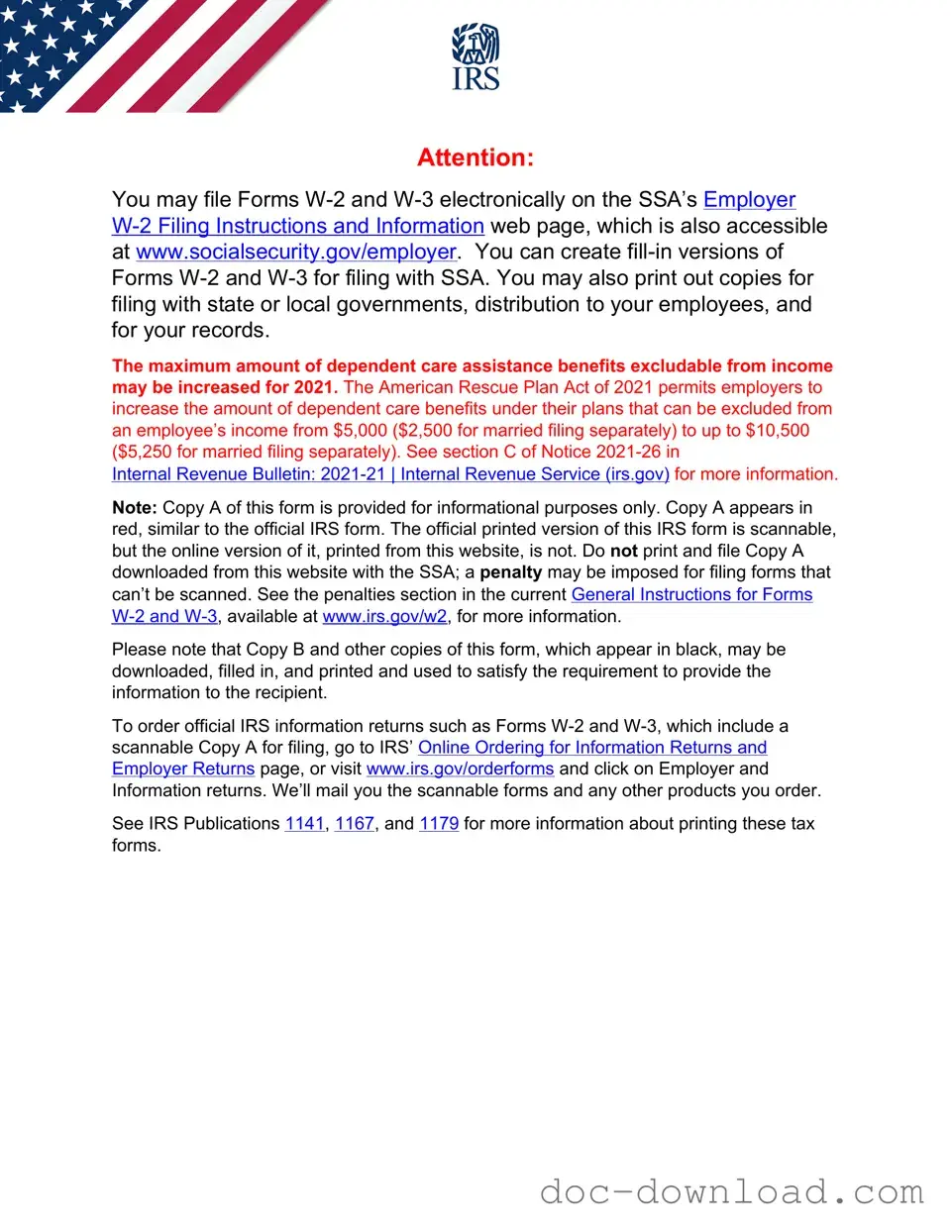The IRS W-2 form is similar to the 1099-MISC form, which is used to report income received by independent contractors and freelancers. While the W-2 details wages, tips, and other compensation for employees, the 1099-MISC provides information on payments made to non-employees. Both forms serve to inform the IRS about income earned, but they cater to different types of workers. The W-2 is issued by employers, whereas the 1099-MISC is sent by businesses that have paid individuals for services rendered.
Another document akin to the W-2 is the 1099-NEC form. This form specifically reports non-employee compensation, similar to the 1099-MISC but focused solely on payments to independent contractors. Like the W-2, the 1099-NEC must be filed with the IRS and provided to the payee. Both forms help the IRS track income and ensure proper tax reporting, but they differ in the employment relationship they represent.
The 1098 form is also comparable to the W-2, though it serves a different purpose. The 1098 is used to report mortgage interest paid by individuals. While the W-2 reports income earned, the 1098 reports interest payments that can be deducted from taxable income. Both forms are essential for tax filing, as they provide necessary information to ensure accurate reporting and compliance with tax laws.
The 1040 form shares similarities with the W-2 in that it is a key document for individual income tax filing. The 1040 is the main form used by taxpayers to report their annual income, including wages reported on the W-2. While the W-2 provides specific details about employment income, the 1040 aggregates all income sources and calculates the total tax liability for the year.
The 1095-A form is related to health insurance coverage and is similar to the W-2 in that it provides essential information for tax purposes. The 1095-A is used to report health insurance obtained through the Health Insurance Marketplace. Just as the W-2 reports income, the 1095-A reports coverage details that may affect a taxpayer's eligibility for premium tax credits and other health-related tax benefits.
The 1099-DIV form is also similar to the W-2 in that it reports income, specifically dividends and distributions from investments. While the W-2 details earned income from employment, the 1099-DIV informs taxpayers about investment income that must be reported on their tax returns. Both documents play a crucial role in ensuring accurate tax reporting and compliance.
In navigating the homeschooling process in Colorado, parents may find it beneficial to familiarize themselves with various forms and documents necessary for compliance. Among these, the Colorado Homeschool Letter of Intent is essential for notifying local education authorities of their decision to homeschool. For additional resources on the required forms, visit Colorado PDF Forms, which provides valuable information and templates to assist in this important step.
The 1099-INT form is another document akin to the W-2, as it reports interest income earned by individuals. Like the W-2, the 1099-INT is used to inform the IRS about income that must be reported on tax returns. Both forms are crucial for taxpayers to ensure they report all sources of income accurately, helping to avoid potential penalties.
The Schedule C form is comparable to the W-2 in that it is used by self-employed individuals to report income and expenses from their business. While the W-2 is used for employees, the Schedule C serves those who earn income independently. Both documents are essential for tax reporting, ensuring that all income is accounted for and that expenses are properly deducted.
The Schedule E form is similar to the W-2 as it reports income from rental properties, partnerships, and S corporations. While the W-2 focuses on employment income, Schedule E addresses income from investments and other sources. Both forms are integral to providing a complete picture of a taxpayer's financial situation for accurate tax reporting.
Finally, the K-1 form is akin to the W-2 in that it reports income from partnerships and S corporations. The K-1 provides information on a partner's share of income, deductions, and credits, which must be reported on their personal tax returns. Similar to the W-2, it ensures that all income is reported to the IRS, helping to maintain compliance with tax laws.







